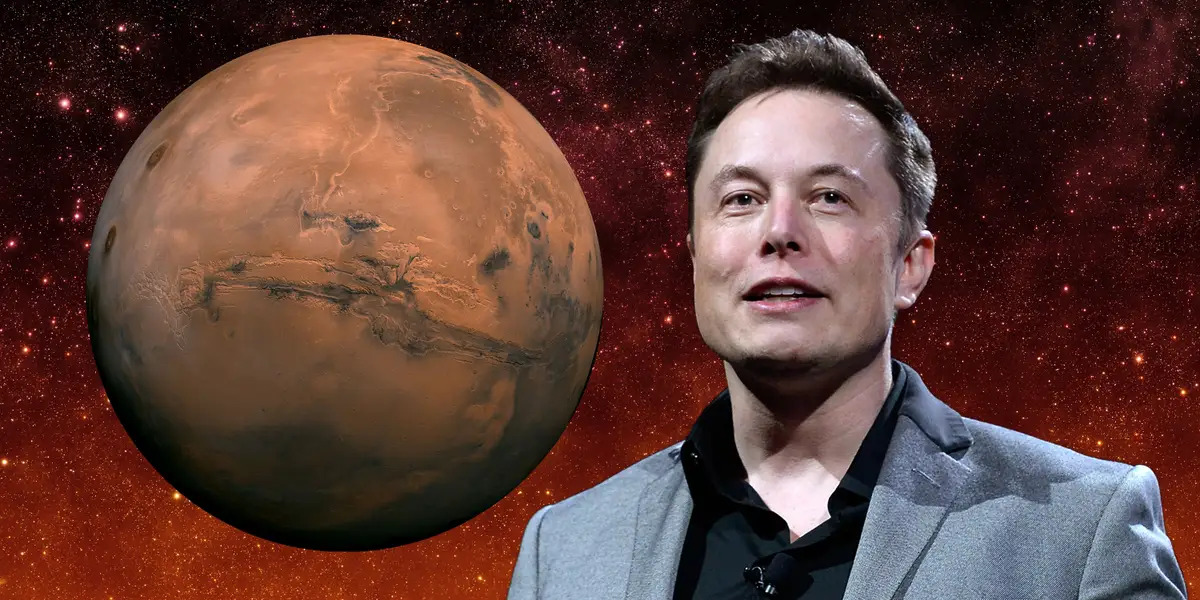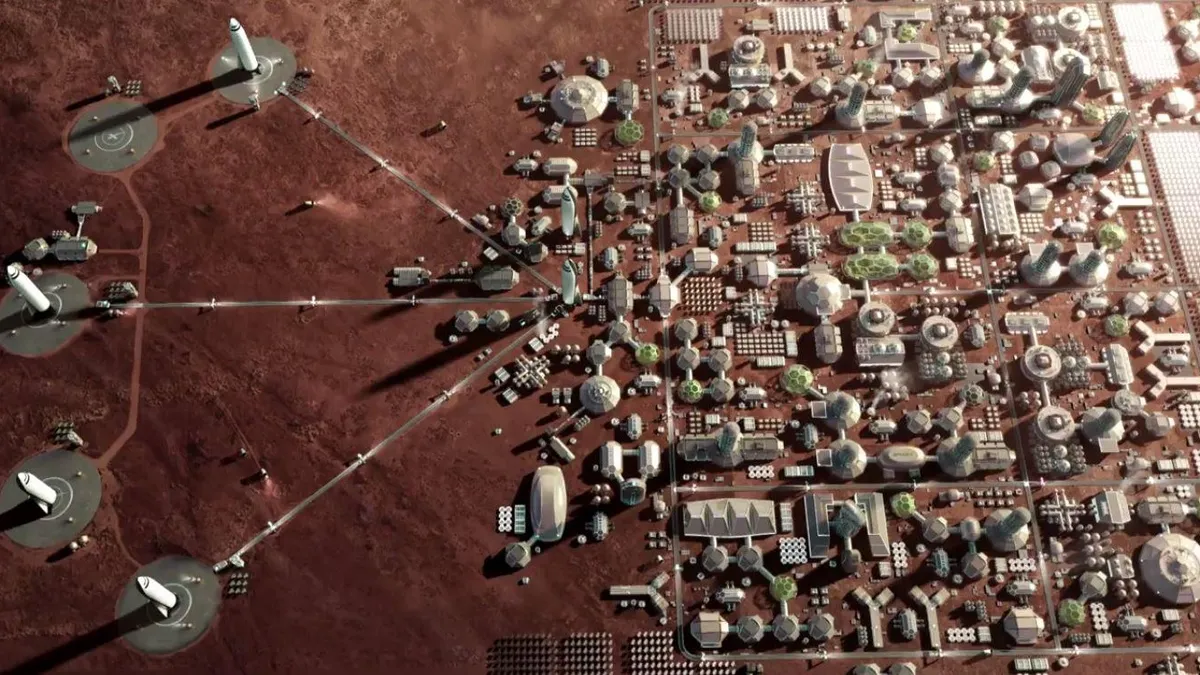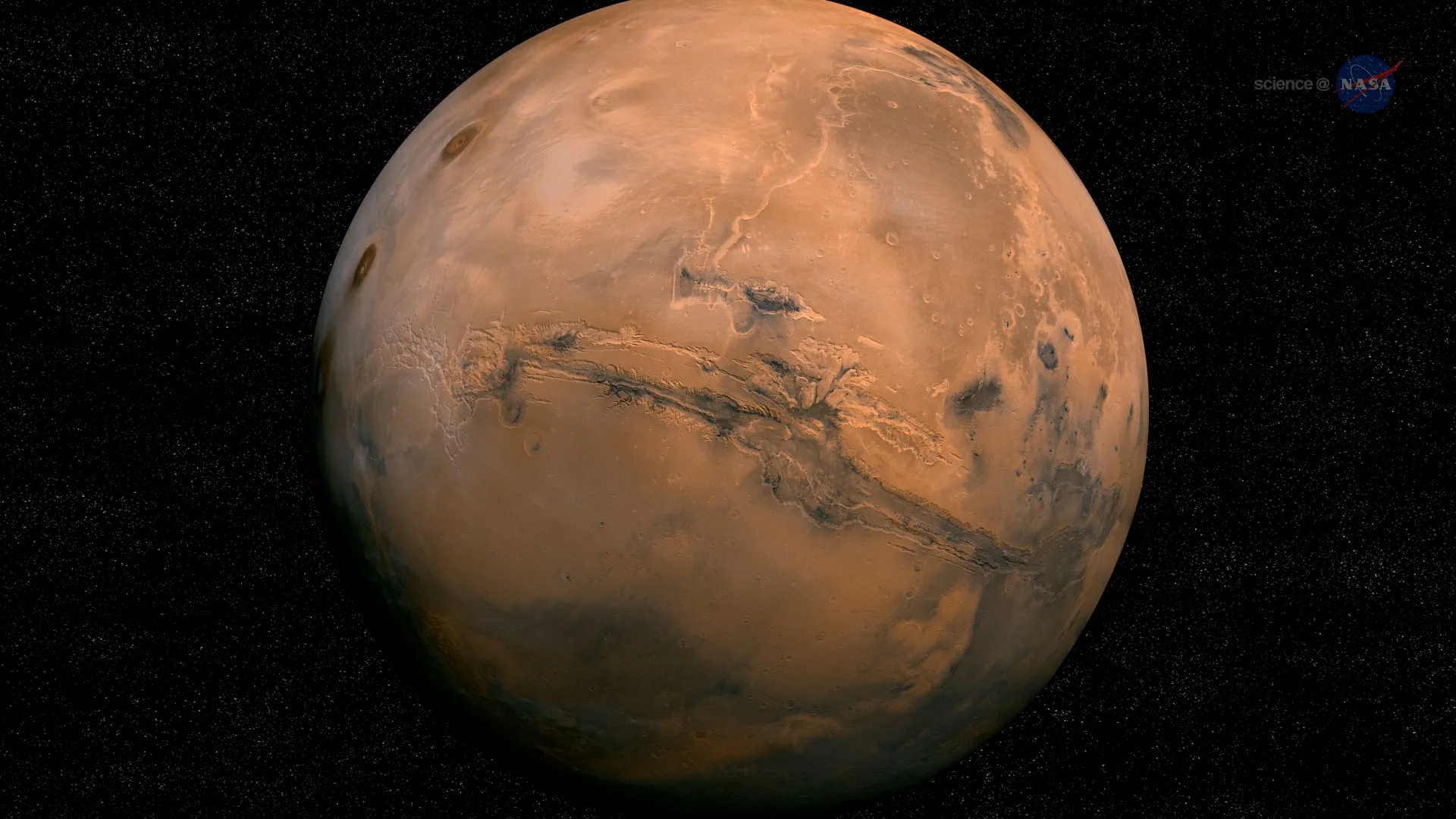
By 2050, Mars will be home to at least a million people. They will be delivered there by a flotilla of Starship spacecraft. This is the biggest dream of the American inventor and billionaire Elon Musk, which he shared a few years ago on the social network X (formerly Twitter). The talented engineer, who is also the richest man in the world, regularly makes high-profile statements, naming specific dates for the delivery of cargo to the Red Planet or the arrival of the first crew there.
At the 67th International Congress of Astronautics, Elon Musk claimed that humans will travel to Mars this year and set foot on its surface in 2025. However, the entrepreneur has to constantly adjust the announced deadlines. As of today, the first manned flight has been postponed to 2029. Let’s try to figure out what stands in the way of ambitious plans and how realistic it is to create an extraterrestrial colony.
Why should Mars be the first?
The conditions on Mars, although very remote, resemble those on Earth. That is why most space researchers recognize that the Red Planet is the most suitable for human exploration:
- A Martian day lasts 24 hours, 39 minutes, and 35 seconds – almost like on Earth.
- The angle of inclination of the Mars axis is 25.19°, and the Earth’s is 23.44°. Thanks to this, the seasons change on both planets. At the same time, the Martian year is almost twice as long as the Earth’s.
- The surface of Mars is surrounded by a thin atmosphere, which at least minimally protects it from solar radiation.
- There is water on Mars that lies at a solid state at a depth of about 1 meter. Its presence has been confirmed by recent NASA research.
- There is soil on the Red Planet – with an optimal pH ratio and enriched with chemical elements. Theoretically, it is suitable for growing plants.
- Carbon dioxide can be extracted from the Martian atmosphere to produce methane to fuel rockets.
- Oxygen for breathing can be produced by splitting water.
The results of many years of research give scientists reason to hope that such extraterrestrial conditions may be sufficient to sustain life.
How will people get to Mars?
In 2002, Elon Musk founded the aerospace company SpaceX. The businessman said that the task of this enterprise would be narrowly focused – to create a reusable space transport to transport people to Mars. Originally called the Interplanetary Transportation System, the project was renamed Starship in 2018. However, the basic idea still remains the same:
- The journey will start at the moment when the Earth and Mars are located in the most favorable way.
- The rocket system will consist of several spacecraft: an interplanetary spacecraft, a launch vehicle, and a propellant ship.
- The main interplanetary spacecraft will be launched into orbit by a powerful launch vehicle, which will then return to Earth.
- During the flight to Mars, a third special vehicle will refuel the manned spacecraft.
- The flight will last approximately 150 days.
- To cover the return trip, the ship’s tanks will be filled with fuel produced on Mars.
- When the planets are aligned again, the ship will return to Earth using its own engines.
According to Elon Musk’s plan, the space fleet will consist of a thousand ships, each of which can accommodate 200 people. The flights will be repeated regularly as the colony develops.
But it did not happen as expected. Creating a ship to fly to the Red Planet was not an easy task. SpaceX engineers managed to build a unique rocket with twice the power of any spacecraft built so far. However, during the first launch, the system exploded a few minutes after launch. During the second attempt in November last year, the signal from the giant ship disappeared after 15 minutes. SpaceX reported that they had lost the vehicle, but would continue testing and learning from their mistakes.
Where will people live on Mars?

Elon Musk hopes to build a Martian city in his lifetime, where the first settlers will live under “glass domes.” After all, without protective equipment, the human body cannot survive even a few minutes. Residential buildings will need to be equipped with airlocks that will maintain atmospheric pressure similar to that of the Earth. For walks outside, you will need pneumatic suits.
The most suitable areas for establishing colonies are in the equatorial zone and in the lowlands. The highest pressure on Mars was recorded in the Hellas Trench with a depth of 8 km. So it is quite possible to start construction at its bottom. The Mariner Valley is characterized by the highest temperature on the planet, which is also suitable. The CaveFinder artificial intelligence system has also joined the search for suitable terrain, having discovered dozens of caves on the Red Planet that could become a base for settlers.
Over the next few centuries, the Red Planet will need to be, to quote Musk, “terraformed to support life as it is on Earth.” We should not hope for quick changes,” the billionaire warns. And he talks about such far-reaching prospects for climate change that will make Mars habitable:
- For water to exist in a liquid state, the Martian atmosphere needs to be densified and the pressure increased.
- With the help of the artificial greenhouse effect, the air temperature near the equator can be raised to +15-20°C.
- Create an analog of the earth’s ozone layer that will protect against solar radiation.
The landing of black genetically modified lichens on Mars could be the start of irreversible changes. Some scientists believe that targeted bombardment of the planet with asteroids will help to heat the atmosphere and fill it with water and gases. And SpaceX founder Elon Musk has repeatedly expressed support for a nuclear strike on Mars, which, in his opinion, will ensure a greenhouse effect.
What is holding back the colonization of Mars?

Elon Musk currently has 2 scenarios in mind. With a favorable development of events, his company will land people on Mars in 5 years, if less fortunate – in 10 years. The billionaire recently stated this during an interview he agreed to give to scientist Lex Friedman.
According to the businessman, colonization can only be slowed down by a banal lack of funds. It’s still too expensive,” Musk explained. He calculated that the cost of one flight to the Red Planet would cost $1 trillion. And to maintain normal life, the colonists will also need medical and communication equipment.
According to the billionaire, the construction of a colony on Mars and its human exploration are inevitable. After all, in half a billion years the Earth will be too hot for humans.

